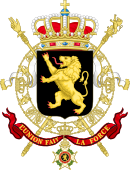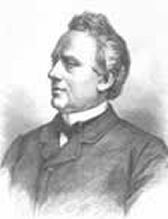| |||||||||||||||||||||||||||||
All 152 seats in the Chamber of Representatives 77 seats needed for a majority | |||||||||||||||||||||||||||||
| |||||||||||||||||||||||||||||
| |||||||||||||||||||||||||||||
 |
|---|
| This article is part of a series on the politics and government of Belgium |
| Constitution |
|
| Foreign relations |
Full general elections were held in Belgium on 14 October 1894, [1] with run-off elections held on 21 October 1894.

Belgium, officially the Kingdom of Belgium, is a country in Western Europe. It is bordered by the Netherlands to the north, Germany to the east, Luxembourg to the southeast, France to the southwest, and the North Sea to the northwest. It covers an area of 30,688 square kilometres (11,849 sq mi) and has a population of more than 11.4 million. The capital and largest city is Brussels; other major cities are Antwerp, Ghent, Charleroi and Liège.
Contents
The elections followed several major reforms: they were the first held under universal male suffrage for those over the age of 25. [2] This followed the abolition of tax qualifications, and increased the number of voters tenfold. [2] Voting was also made compulsory. Provincial senators were introduced in addition to the existing directly elected ones.

Compulsory voting is an effect of laws which require eligible citizens to register and vote in elections, and may impose penalties on those who fail to do so. As of August 2013, 22 countries provide for compulsory voting, and 11 democracies — about 5% of all United Nations members — enforce it.
The electoral reforms were implemented in 1893 under the Catholic government led by Auguste Beernaert, who had been in power for nearly ten years, but who resigned because his proposal for proportional representation was rejected. A government led by Jules de Burlet took over in March 1894.

Auguste Marie François Beernaert was the 14th Prime Minister of Belgium from October 1884 to March 1894.
Proportional representation (PR) characterizes electoral systems in which divisions in an electorate are reflected proportionately in the elected body. If n% of the electorate support a particular political party, then roughly n% of seats will be won by that party. The essence of such systems is that all votes contribute to the result - not just a plurality, or a bare majority. The most prevalent forms of proportional representation all require the use of multiple-member voting districts, as it is not possible to fill a single seat in a proportional manner. In fact, the implementations of PR that achieve the highest levels of proportionality tend to include districts with large numbers of seats.

Jules Philippe Marie de Burlet was a Belgian Catholic Party politician.
The result was a victory for the Catholic Party, which won all seats in every Flemish arrondissement, in Brussels and in seven rural Walloon arrondissements, giving a total of 104 of the 152 seats in the Chamber of Representatives. [3] The Belgian Labour Party gained parliamentary representation for the first time, winning all seats of Mons, Soignies, Charleroi, Verviers, 6 seats in Liège and one in Namur. Meanwhile, the Liberal Party, despite receiving more votes than the socialists, won only 20 seats and thus lost two-thirds of its seats. [4] This was caused by the concentration of socialists in industrial Walloon areas, compared to the dispersed presence of liberal voters throughout the country. This highlighted the need for a proportional system, which would eventually be introduced in 1899.
The Catholic Party was established in 1869 as the Confessional Catholic Party.
The Belgian Labour Party or Belgian Workers' Party was the first major socialist party in Belgium. Founded in 1885, the party was officially disbanded in 1940 and superseded by the Belgian Socialist Party in 1945.
The Liberal Party was a Belgian political party that existed from 1846 until 1961, when it became the Party for Freedom and Progress, Partij voor Vrijheid en Vooruitgang/Parti de la Liberté et du Progrès or PVV-PLP, under the leadership of Omer Vanaudenhove.














